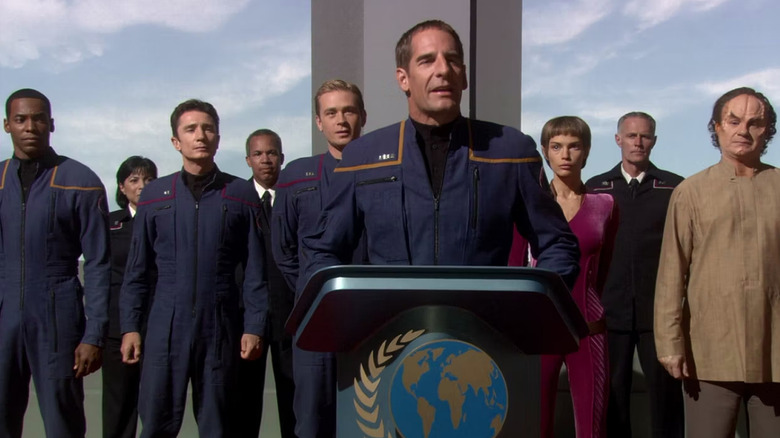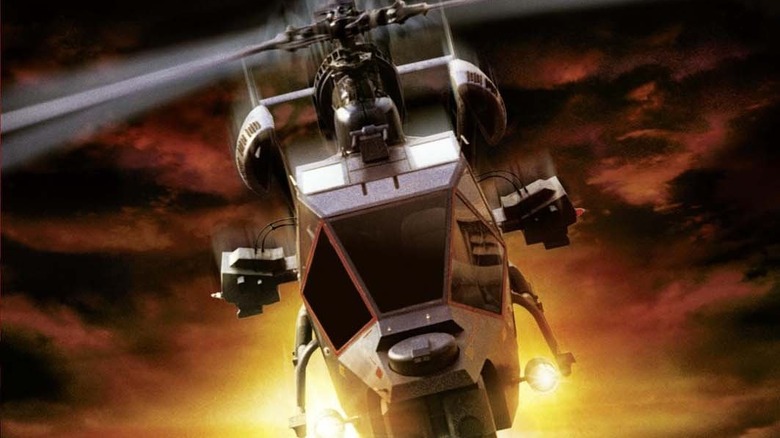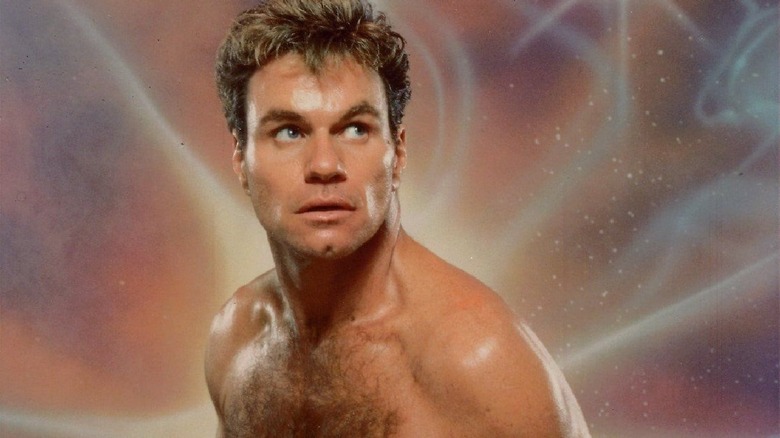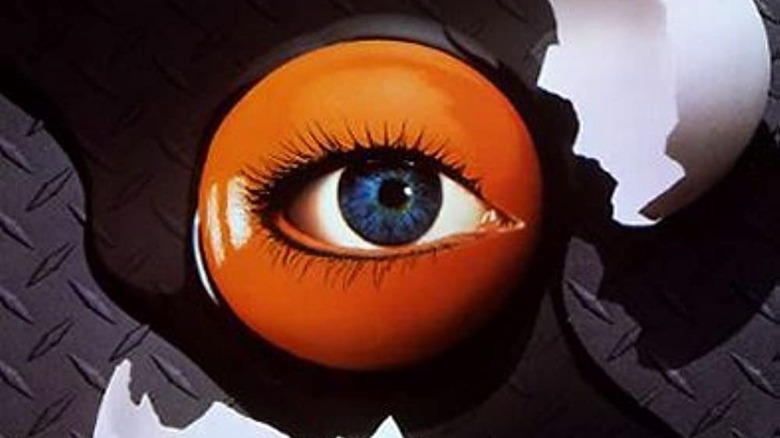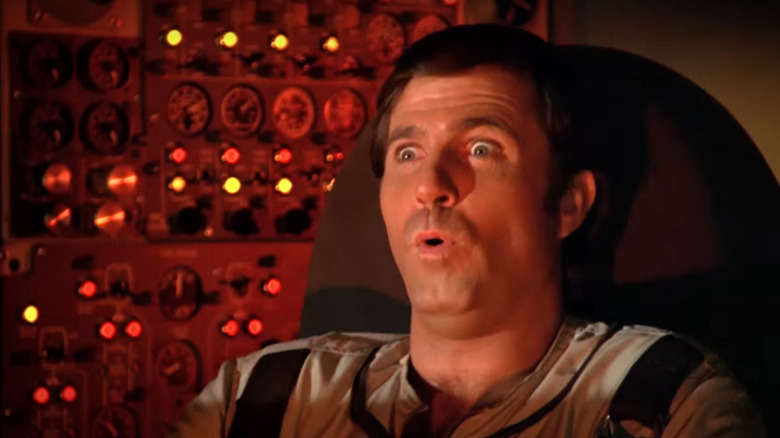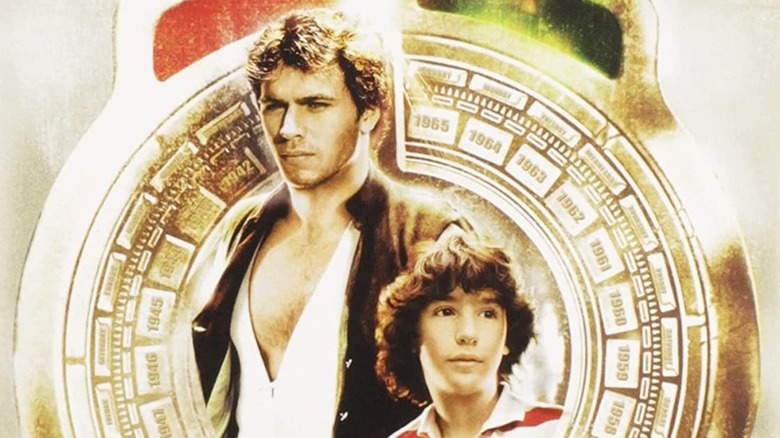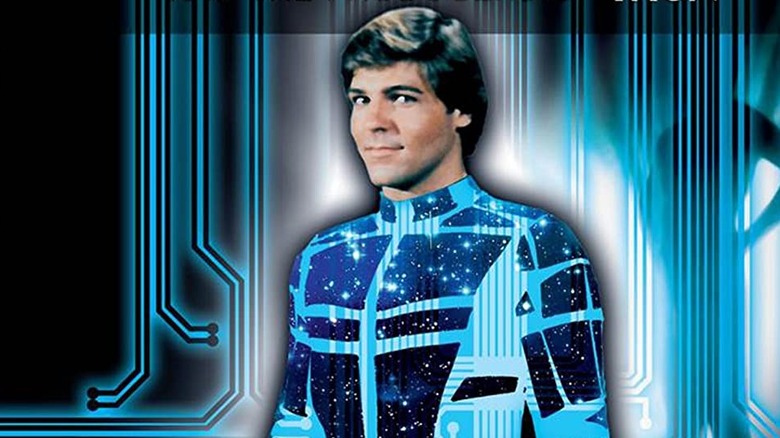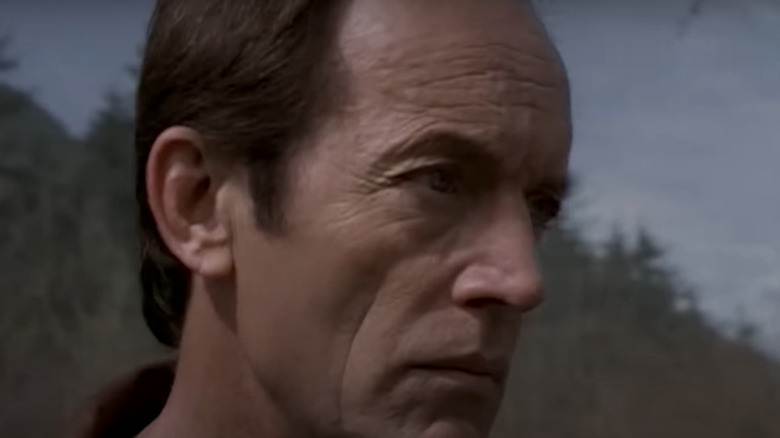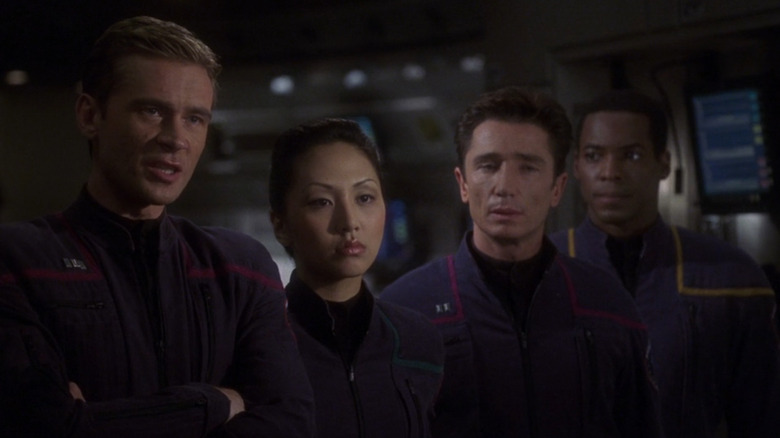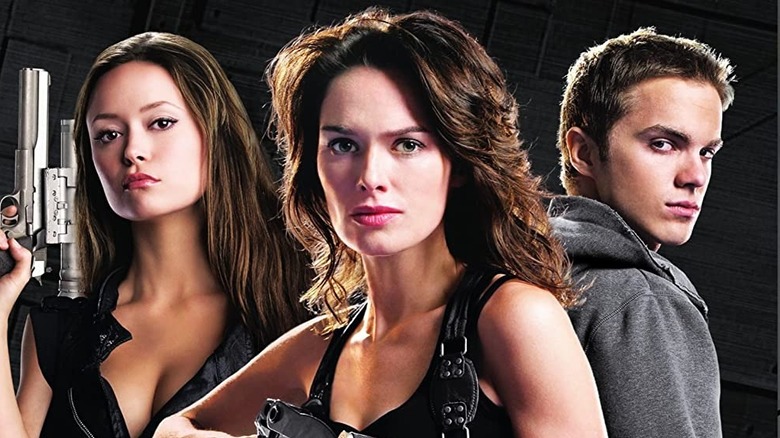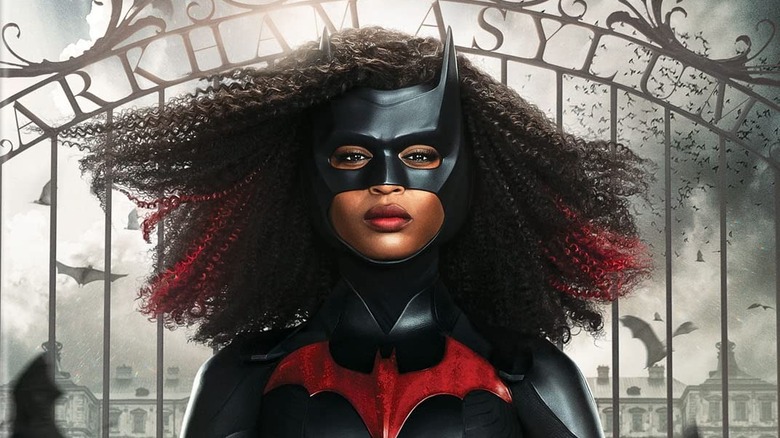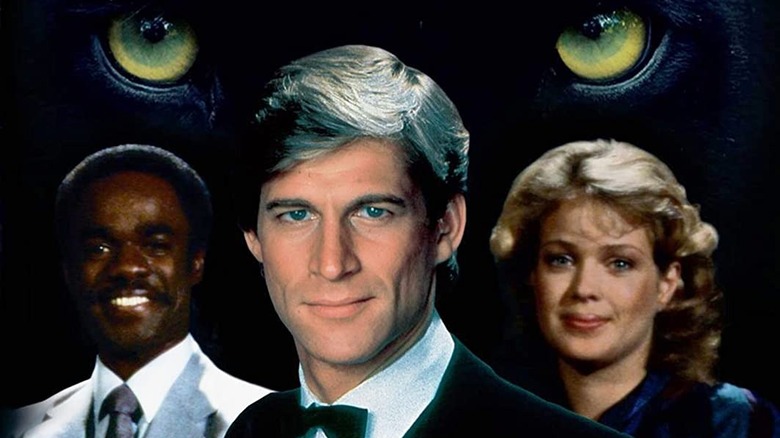12 Canceled Sci-Fi Shows That Deserve A Second Chance
Ever since letter-writing campaigns got the original "Star Trek" a third season, science fiction fans have beat the drum for their favorite shows that got prematurely canceled. Sometimes it works: "Jericho" got a second season thanks to fans mailing bags of nuts to the studio. Other times it doesn't: "Firefly" fans managed to get a movie, but never the revived series they wanted. Honestly, that's probably for the best given what we now know about Joss Whedon and Adam Baldwin.
While we don't hold out a lot of actual hope for the shows below to come back, this article highlights sci-fi series from the last several decades that should have run longer, either because they ended poorly/awkwardly or just because they were way too short. Where possible, because we're nothing if not constructive, suggestions are included as to how a continuation today might go. Here are 12 canceled sci-fi shows that deserve a second chance.
Blue Thunder (1984)
John Badham's 1983 movie "Blue Thunder" was a cautionary tale about the militarization of the police. Completely misunderstanding their own property, Columbia Pictures turned it into a kickass action show in which the good guys righteously use a super hi-tech military helicopter to take down the bad guys. Only the helicopter remained, piloted by James Farentino's Chaney and a young Dana Carvey as the awkwardly named Clinton C. Wonderlove. Assisting them on the ground in a truck called Rolling Thunder were football players Dick Butkus and Bubba Smith, playing characters cleverly named "Ski" and "Bubba." Much of the chopper footage was shamelessly reused movie shots.
"Airwolf" became the far better-known helicopter show, but "Blue Thunder" — featuring TWO pairs of mismatched buddy cops, on land and in the air — was way more unabashedly meatheaded, and thus better. The ratings did not agree, however, and the show only lasted a single season. With police militarization once again a forefront issue in the world, it's time to bring it back. Dana Carvey as a helicopter mechanic might not pass the believability test this time around, but Dick Butkus is still around and could play Ski as an aging mayor so besotted with the good old days that he doesn't see the dangers of using Blue Thunder against political protestors. Bring it back to Badham's vision while incorporating the show as canon ... and definitely keep the awesome theme tune.
Hard Time on Planet Earth (1989)
Like the previous "Starman" series based on the John Carpenter movie, "Hard Time on Planet Earth" featured an alien fugitive on Earth who moved from town to town trying different jobs every week, all while ostensibly learning about humanity. While Robert Hays' Starman was a sensitive soul with a smart kid, "Hard Time" protagonist Jesse was a meathead played by "Karate Kid" villain Martin Kove. The show's creators, "Predator" screenwriters Jim and John Thomas, clearly still had Arnold Schwarzenegger on the brain. An alien war veteran unjustly convicted for sedition, Jesse was sent to Earth to figure out how to be a good person, along with a floating CGI seashell that kept blathering things like "Hostility! Blamp! Not good!"
Due to his commitment to the show, Martin Kove was unable to return as the main bad guy in "The Karate Kid Part III," instead appearing in a smaller role. Still, that ultimately worked out for the best, as we got Thomas Ian Griffith's Terry Silver instead and the two of them together make for some of the best moments on "Cobra Kai." That show regularly demonstrates that Kove's still got it, and is great at revisiting his most popular '80s character. So how about rebooting his somewhat less popular one? If John Kreese can still kick ass, so can Jesse. Alternatively, he could mentor a new alien in need of reforming. David Harbour might be available.
Perversions of Science (1997)
It should have been a great idea. With the success of "Tales From the Crypt," based on the old EC horror comics of the same name (and others), producer Gilbert Adler and executive producers Richard Donner, Walter Hill, Joel Silver, and Robert Zemeckis tried to use the same format on EC's similar science fiction comics. With cast members including Jeffrey Combs, Vincent Schiavelli, William Shatner, David Warner, and Chris Sarandon, what could go wrong?
Arguably, the presentation was the problem. Using the original name of the comics, "Weird Science," was out of the question, since a movie and a TV show by that name already existed. "Perversions of Science" implied something else, especially when one of the first episodes involved Kevin Pollak getting his privates stuck in a sexbot. In place of the Crypt Keeper making Halloween-ish puns, the host was a robo-dominatrix named Chrome who made sexual innuendoes (and apparently lived on the submolecular level of a popcorn kernel). It's not that there's no place for horny sci-fi, it's just that the EC comics were not that. They could be great source material for an anthology show again if anyone were to try a more faithful version that isn't falsely pretending to be "Heavy Metal."
Buck Rogers in the 25th Century (1979-1981)
Following the cancellation of "Battlestar Galactica" in 1979, Glen A. Larson tried again for some of that sweet "Star Wars" success with an update of "Buck Rogers," one of the very first comic heroes ever created. Beginning with a theatrical movie, the show updated Buck for a new generation by making him a NASA pilot in the far-future year of ... 1987. Frozen in space following an accident, he revives nearly 500 years later to find a post-nuclear Earth in a battle with the invading Draconians. Perhaps more importantly, he meets a love interest in Erin Gray's Col. Wilma Deering as well as a small robot sidekick named Twiki, voiced by Bugs Bunny himself Mel Blanc.
The show lasted only two seasons, with a major retool for the second to make it more of a "Star Trek"-like deep-space exploration show. Star Gil Gerard was not fond of the changes and frequently complained, leading the network to fight back with threats of legal action. Though the show was short-lived, it stuck in the minds of children who grew up to reference it in their own creative works. Bird-person on "Rick and Morty" is based on Buck's season 2 partner Hawk, and "South Park" did an entire "Buck Rogers" parody that sent Cartman into the future. Gerard and Gray are still around, so maybe a new "Buck Rogers" could be their characters' grandson.
Voyagers! (1982-1983)
"Voyagers!" star Jon-Erik Hexum is, unfortunately, best known for his tragic death at age 26 when he put a prop gun to his head and fired a blank, fracturing his skull and causing brain death days later. Before that incident on the set of "Cover Up," he made a name for himself on "Voyagers!" as Phineas Bogg, a time traveler whose name clearly riffs on Jules Verne's Phileas Fogg. Together with a young boy named Jeffrey Jones (Meeno Peluce, the half-brother of Soleil Moon Frye), he'd fall out of the sky every episode into a historical situation where some of the details were wrong. Bogg's job was to set things right, but much like the Greatest American Hero before him, he lost the textbook to tell him how and relied on Jeffrey's abundant book smarts. Indeed, each episode would end with a reminder to kids that they could learn more about the historical characters in question by reading books themselves.
Bogg was far from the only Voyager on the show, and Jeffrey seemed destined to grow up to be a Voyager, so there's plenty of room to go from there. Peluce works as a photographer nowadays, but recasting the adult version of an 11-year-old wouldn't be hard if he didn't want to return.
Automan (1983-1984)
In the '80s, audiences and screenwriters alike believed that computers were magic devices that could do anything. Combined with prolific TV creator Glen A. Larson's penchant for "borrowing" popular concepts and refurbishing them ("Battlestar Galactica" from "Star Wars," to cite the most egregious lawsuit-provoking example) and we got a full season of "what if there was a cop buddy show, but one of the buddies is Tron? Also, he speaks in that English-ish North Atlantic accent popular among actors of the '50s and '60s and literally nobody else?"
The result was "Automan," which starred Desi Arnaz Jr. as an LAPD computer programmer who creates a computer-generated man with super powers (natch) and a sentient cursor who can 3D print usable vehicles. Said cursor, named "Cursor" (billed as playing himself) was also somehow horny for busty blondes because casual misogyny was considered hilarious back then. One could argue it predicted the Internet's eternal association with porn. When required to cover up his glittery blue body and pose as a human, Automan would utilize the clever alias of ... "Otto Mann." "Tron" got a sequel decades later, so why not "Automan"? Actor Chuck Wagner played him again in a fan film five years ago, and while he's clearly put on some years and some weight, there's no reason Automan himself couldn't have aged or adopted an age filter to blend in somewhere. The original show, quickly canceled in the U.S., proved popular enough overseas to merit action figures.
Millennium (1996-1999)
Look, it's still pretty incredible that any network was willing to give us three seasons of a series starring Lance Henriksen. One of the all-time great horror and character actors, yet not necessarily a butts-in-seats kind of draw, he was the perfect actor to play a criminal profiler able to see crime scenes through the killer's eyes (a mild "Manhunter"/"Red Dragon" ripoff, but whatever). The bigger stretch for viewers was believing he's happily married with a daughter, but for once in his career, Henriksen got to play a tender family guy, albeit one who still possesses the face and voice of a prophet of doom. As his even creepier boss, "The Stepfather" star Terry O'Quinn foreshadowed the kind of dangerous charisma that would make him a fan favorite on "Lost" a few years later.
All well and good, but as cool as the series was it still left us on a cliffhanger with Henriksen's Frank Black on the run from his sinister employers, the Millennium Group. A subsequent episode of creator Chris Carter's other series, "The X-Files," offered some closure with a crossover episode that showed Frank in a mental hospital hoping to get custody of his daughter, but geez, what a letdown. That was the worst they could do to him? Conspiracy theories in real life aren't as fun as they used to be, having been hijacked by overly political players like Alex Jones and George Noory. Let's get Henriksen back for a few more.
Star Trek: Enterprise (2001-2005)
The only Star Trek series besides the original to get prematurely canceled, "Enterprise" was given a chance to wrap things up at the end of season 4. They did so in a way that arguably made fans angrier than if they hadn't. Popular character Trip Tucker was killed off ridiculously easily after all he'd survived, prematurely ending any hopes for his budding romance with the Vulcan T'Pol. After that, the entire show was revealed to be a hologram viewed by "The Next Generation" characters Riker and Troi. Considering how well "The Next Generation," "Deep Space Nine," and "Voyager" absolutely nailed their final episodes perfectly, it was a massive whiff and felt like a middle finger to the faithful.
There are ways within the show itself to repair the damage, however. One of the biggest remaining loose ends was an unnamed villain nicknamed "Future Guy" by fans, who appeared as a silhouette from the future waging a "Temporal Cold War." The show seemed at times to build toward revealing his identity but never did. Series co-creator Brannon Braga would later claim that it would have been a future version of Captain Archer. If that were the case, who says he can't try again to mess with time and change the events of the final episode? Trip wouldn't have to die so stupidly, and the original "Enterprise" could enter the Romulan War as planned. Could they pull it off? We've got faith ... of the heart.
Sapphire and Steel (1979-1982)
Imagine if "Doctor Who" had been made by David Lynch in 1979 and you'd have "Sapphire and Steel." A similar premise, but much more mystery and creepiness. Sapphire (Joanna Lumley) and Steel (David McCallum) are otherworldly operatives with special abilities, whose backgrounds remain vague. They are frequently called upon by unknown higher powers to fix the flow of time, which often breaks and unleashes ghost-like beings and supernatural events. Do they have scientific/alien explanations, like all the so-called ghosts the Doctor ever encounters? Yes, probably, but the show's not necessarily going to explain them. Like so many other UK sci-fi shows on minimal budgets, "Sapphire and Steel" creates uneasiness by keeping viewers in the dark literally and metaphorically.
The final season ended with Sapphire and Steel trapped in an interdimensional roadside diner for eternity, floating in space like they're trapped in the universe's worst TARDIS. Lumley and McCallum are both still alive and working, so it's not too late to free their alter egos. Perhaps "Doctor Who" could do a crossover?
Terminator: The Sarah Connor Chronicles (2008-2009)
Maybe "Terminator: Dark Fate" didn't do so well at the box office because audiences had already seen a "Terminator" story that ignored all but the first two movies. Fox's "The Sarah Connor Chronicles" cast a pre-Cersei Lannister Lena Headey as the butt-kicking mom of the future, with Thomas Dekker as a teenage John, and Summer Glau as a protective Terminator unsubtly named Cameron. Brian Austin Green played Kyle Reese's brother, Garret Dillahunt was a new evil Terminator, and Garbage singer Shirley Manson a liquid-metal T-1001 with questionable allegiances. By virtue of being a two-season show, it developed more complex storylines than any of the movies. It ended on the cliffhanger of Sarah sending John to the future, where nobody knows who he is.
Had "Terminator: Genisys" been a success, we might have learned more. The plan for a sequel was to have Matt Smith's sentient Skynet computer revealed as a dimension hopper, introducing the notion of a Terminator multiverse — which could have included the TV series — years before Spider-Man and Doctor Strange entered theirs. The problem with saving the good stuff for a sequel, though, is nobody wants to wait an entire movie for the story they came to see. At this point, the franchise has simply left a lot of dead ends and false starts lying around, but "The Sarah Connor Chronicles" is the one we'd actually like to see to its conclusion.
Batwoman (2019-2022)
Sadly, it figures that the one CW DC superhero show canceled way prematurely would be the one starring an LGBT POC. Yes, "Legends of Tomorrow" got canceled one season prematurely, and yes, it too strongly featured LGBT characters, but that was a show on the way out while "Batwoman" clearly planned for much more. A storyline involving trophies from classic Batman villains falling into the wrong hands and recreating them even gave us, on a technicality, the first black Joker in live-action.
"Batwoman" got off to a rough start after lead Ruby Rose, playing the DC Comics character Kate Kane/Batwoman, quit at the end of season 1. Initially, it seemed a mutual decision but things later turned acrimonious, with Rose blasting unsafe working conditions. In their place, the show created an all-new Batwoman, Ryan Wilder (Javicia Leslie), which allowed the show to chart a course completely unbeholden to previous comics continuity. With the addition of Camrus Johnson as Luke Fox/Batwing, the stage seemed set to create a whole new Bat family that looked a lot more diverse than usual. Unfortunately, The CW seemed to be in a canceling mood when "Batwoman" got the axe. There's still time for Ryan Wilder to show up in another DC show, or appear in a crossover. It's the least WB could do for the fans.
Manimal (1983)
If everyone who has ever made a joke or reference to "Manimal" had ever actually watched the show, it might have survived longer than eight episodes. Instead, the adventures of the wealthy Dr. Jonathan Chase — trained in a mysterious "African technique" that allows him to shape-shift into animals — live only in our memories. Mostly favoring a hawk and a panther, he could include other animal forms when the budget permitted, or adopt animal traits in human form. Fortunately for his modesty and '80s TV censors, his clothes always magically came back when he resumed human form.
Dr. Chase briefly returned in one episode of producer Glen A. Larson's 1998 series "Night Man." Sadly, star Simon MacCorkindale died of cancer in his fifties, but if becoming Manimal relies on an African technique, how about an update with an African lead? "Manimal" and "Flash Gordon" star Melody Anderson is officially retired from acting, but she still appears at comic conventions and could probably be talked into returning for at least a new pilot. Thanks to CG, nobody needs to train or act opposite an actual panther this time around.
